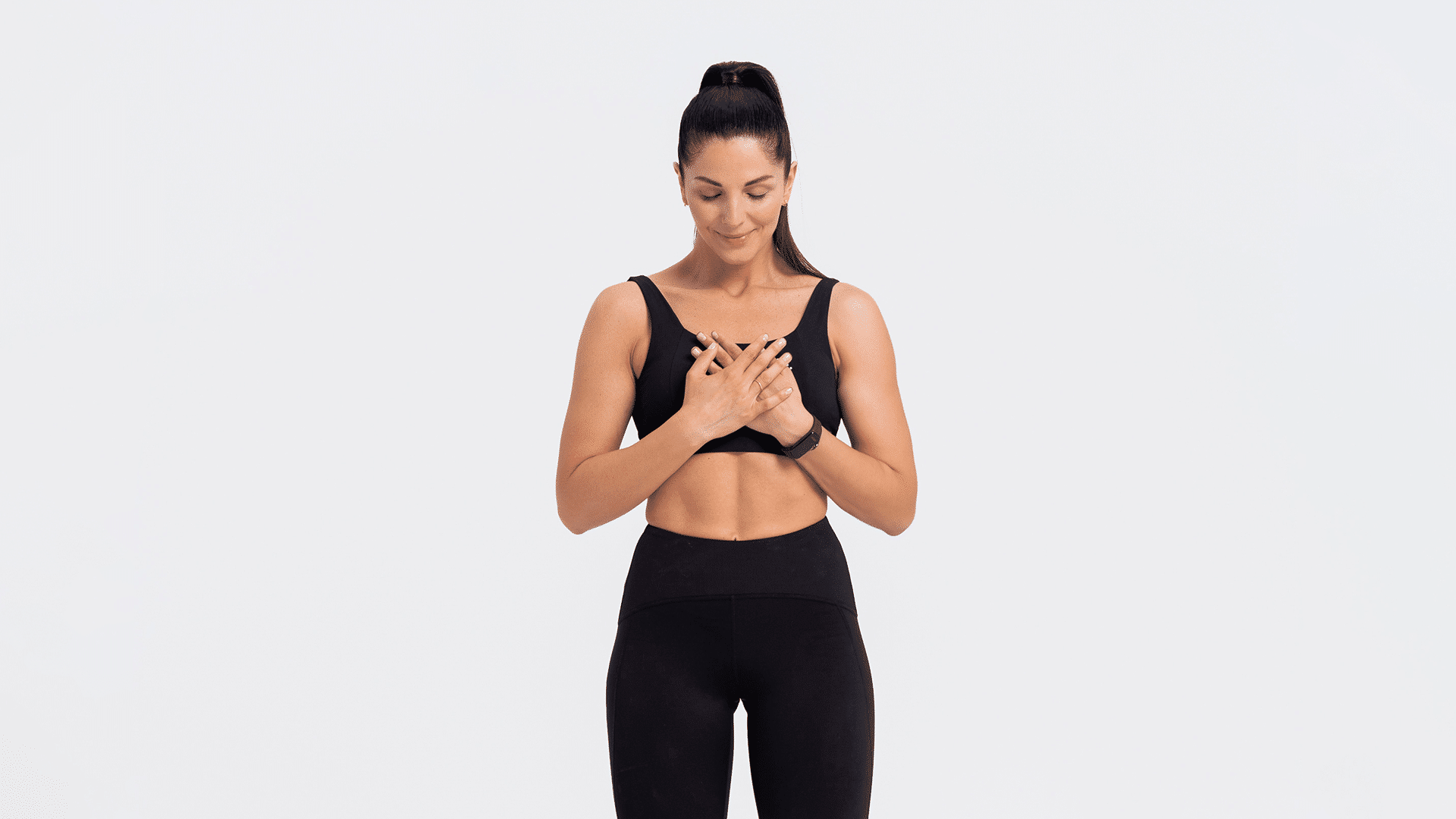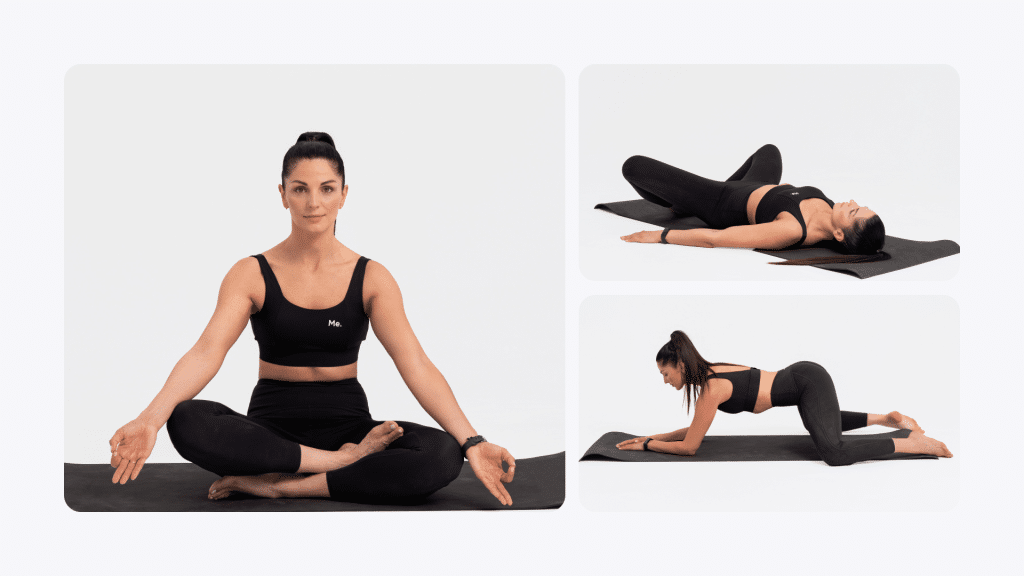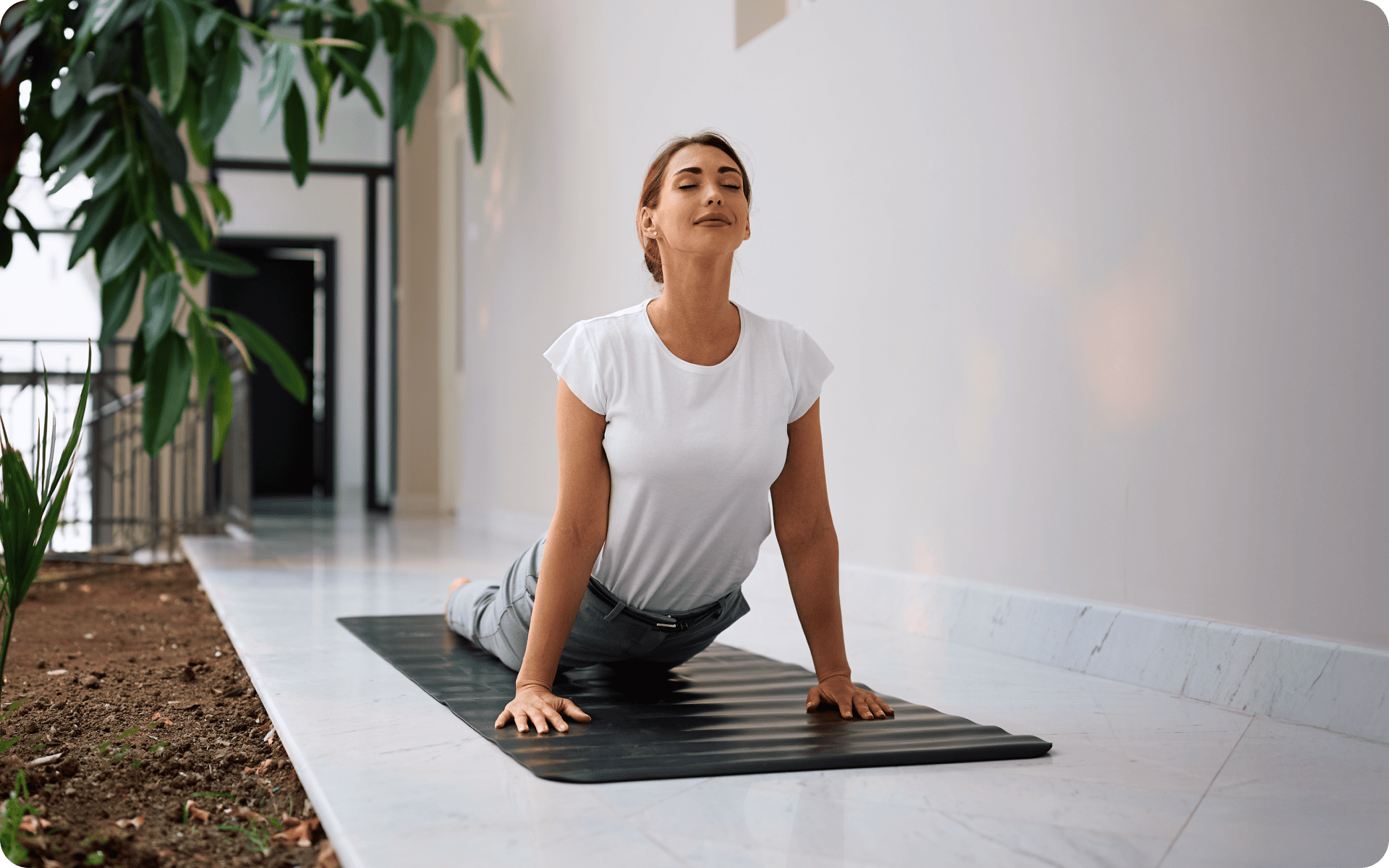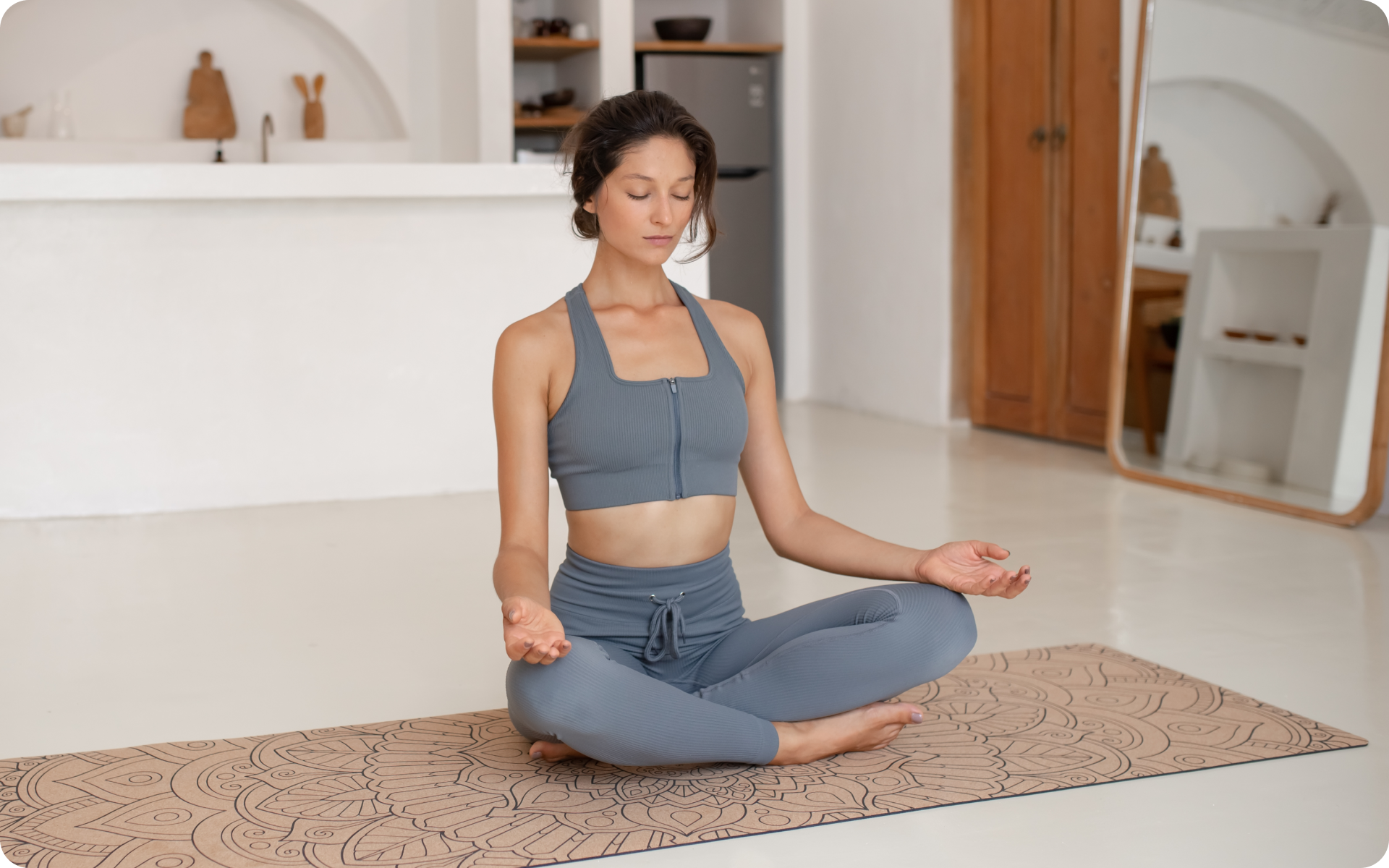The word “somatic” originates from the Greek term “soma”, which means ‘body’. It is a term that emphasizes the profound connection between the mind and body, an aspect which is often overlooked in the fast-paced modern world.
Somatic breathing exercises harness this connection and use conscious awareness of breathing patterns to influence our mind, particularly for relief of distressful feelings.
Anxiety is a normal reaction to stress and can manifest physically in our bodies. These physical sensations are referred to as somatic symptoms and are often associated with emotional or psychological distress. These symptoms can manifest as bodily sensations, discomfort, or pain such as increased heart rate, tightness of the chest, or shortness of breath and are believed to be influenced by a person’s emotional state, stress levels, and mental well-being. (1).
By using somatic breathing techniques, these physical symptoms can be directly engaged with, which offers a natural and accessible form of relief.
These exercises are grounded in centuries-old practices and have gained scientific validation for their effectiveness in stress reduction while promoting a sense of calm and well-being.
Let us now delve deeper into how somatic breathing exercises can be used for alleviating distress and enhancing overall well-being.
What Is Somatic Breathing?
Somatic breathing is also known as Somatic Breath Therapy and is a method of conscious, intentional breathing focusing on full breaths to increase oxygen flow to the brain and the body (2). Here are some key aspects.
Mindful Attention To Breath
Unlike shallow breathing, somatic breathing encourages full, deep breaths, ensuring more oxygen gets to the brain and other parts of the body. It is not simply belly breathing and uses the diaphragm effectively to draw in air and exhale fully.
Many somatic breathing practices require a rhythm and pattern to be found that serves you best, which adds a mindful element to the process.
Body Awareness
Somatic breathing increases sensory awareness to different parts of the body, including throat, jaw, diaphragm, and shoulders, during the breath cycle. The central aspect of somatic breathing is tuning into the sensations associated with the breath. This heightened body connection helps to let go of tension and embrace relaxation.
Mind-Body Connection
Somatic Breathwork Healing uses a two-part pranayama, or breath control technique, to bring the nervous system into an altered state of consciousness. This can result in cathartic emotional releases and enhanced mental clarity By engaging in somatic breathing, individuals deepen their awareness of how their thoughts, emotions, and physical sensations are interconnected.
Emotional Release
Specific exercises such as Vibrational Somatic Breathing can help release feelings of tension. By getting in touch with the physical manifestations of stress, somatic breathing can be used for the alleviation of these symptoms.
Whether you want to learn how to exit the spiral of self-harming behavior, overcome anxiety, cure insomnia or simply give yourself the time and space to bliss out and soak up the moment of complete peace and quiet – BetterMe: Meditation & Sleep app is exactly the tool for that! If you don’t take care of number one, who will?
What Is The Purpose Of Somatic Breathwork?
Somatic breathwork is a therapeutic technique using conscious and controlled breathing patterns as a means of facilitating physical, emotional, and mental healing.
The following are several key purposes of somatic breathwork (2):
- Promotes Relaxation: By focusing on breathing, the mind can be calmed, which reduces feelings of stress and leads to a state of deep relaxation.
- Enhances Self-Awareness: This encourages mindfulness and self-awareness and helps us tune into our bodies, recognize our emotions, and acknowledge our thoughts.
- Physiological Healing: Increased oxygen flow during the breathing exercises can serve to stimulate the natural healing processes of the body, which potentially aids in stillness or injury recovery.
- Emotional Release: Somatic breathwork can help tap into repressed or hidden emotions, which allows them to be released and processed.
- Improves Mental Clarity: Regular practice can result in improved mental clarity and focus, which enhances overall cognitive function.
- Spiritual Connection: For some people, breathwork serves as a spiritual practice and fosters a deeper connection to oneself and the universe.
What Is An Example Of A Somatic Exercise For Breathing?
An example of a somatic exercise for breathing is the 4-7-8 breath. This exercise is performed as follows:
- Sit in a comfortable position with your back straight and feet flat on the floor. You may close your eyes if you wish.
- Place one hand on the stomach and the other on the chest, feeling how your body moves as you inhale and exhale.
- Notice your breathing in and out.
- On the exhale completely breath out through the mouth, making a “whoosh” sound.
- Close your lips and inhale gently through the nose for 4 counts, feeling your stomach rise as you breathe in.
- Hold your breath for 7 counts without straining yourself.
- Exhale slowly through your mouth for 8 counts, feeling the stomach fall as you breathe out.
- Repeat this cycle 3-5 times, taking breaks in between if necessary.
Read more: Breathing For Focus: Improve Concentration & Reduce Anxiety With These Simple Steps.
What Are Other Somatic Breathing Exercises?
In addition to the 4-7-8 breath, there are several other somatic breathing exercises you can practice, including:
Vibrational Breathwork
This involves deep belly breaths in combination with vocal toning and humming sounds during the exhale cycle. This technique combines the elements of intentional breathing with the added dimension of vocalization or resonance. This helps reduce tension and promote relaxation.
- Sit or lie in a comfortable position. You may close your eyes if you wish.
- Begin with a few deep and slow breaths, inhaling deeply through your nose and exhaling fully through your mouth.
- As you exhale, make a ‘v’ or ‘mmm’ sound
- Pay attention to the vibrations created in your body as you vocalize. You might feel these vibrations in your chest, throat, or even in your head. Allow the vibrations to resonate within you.
- Continue this process for several minutes and focus on the sensations in your body. Try to make the sound consistent and rhythmic with each exhalation.
Diaphragmatic Breathing
This exercise involves the intentional use of the diaphragm to breathe, which is particularly beneficial for relaxation and stress relief.
- Lie down on your back or sit comfortably. Remove your shoes if you feel comfortable.
- Place a hand on your lower belly and one on your chest.
- Take a slow, deep breath in through your nose, allowing your belly to rise as you fill your lungs with air. The hand on your belly must rise, whereas your hand on your chest should remain still.
- Exhale slowly through the mouth or nose, allowing your belly to fall..
- Repeat this process for several minutes and focus on engaging your diaphragm.
Grounding Somatic Breathing
Grounding is a technique involving a focus on physical sensations to bring yourself into the present moment. This can be particularly effective for the management of overwhelming emotions.
- Find a quiet, comfortable place where you won’t be disturbed.
- Close your eyes and take several deep breaths and focus on the sensation of the air entering and leaving your body.
- Focus on your physical surroundings and note the sensation of your body against the floor or chair.
- Maintain focus for several minutes, returning your attention to your breathing if your mind starts to wander.
Alternate Nostril Breath
This yoga -inspired type of breathing helps restore balance in the nervous system and is regularly practiced in yoga.
- Sit or lie in a comfortable position. If you are comfortable to sit with legs crossed
- Place your left hand on your lap.
- With your right hand, cover your right nostril with your thumb and exhale out completely through the left nostril.
- Inhale deeply through the left nostril and then close the left nostril with your fingers
- Then open the right nostril and exhale through it, covering the left nostril.
- Continue this pattern of alternating sides for several minutes, focusing on your breath all the while.
Box Breathing
This is a type of controlled breathing involving inhaling for 4 seconds, holding the breath for 4 seconds, exhaling for 4 seconds, and pausing for 4 seconds. This helps calm the mind while reducing feelings of stress.
- Sit or lie in a comfortable position.
- Take a few breaths as you normally would for a minute.
- Take a deep breath in and count slowly to 4.
- Hold your breath for a further count of 4 before exhaling for 4 counts.
- Pause for 4 counts at the end of your exhale before starting the process again.
- Repeat this cycle for several minutes and focus on clearing your mind.
Coherent Breathing
This practice uses long slow or paced breathing at a rate of 5-6 breaths per minute. It can help regulate the natural rhythms of the body while also promoting deep relaxation.
- Sit or lie in a comfortable position.
- Focus on your natural breathing. Count the length of each breath (inhale and exhale) to obtain a baseline.
- Now place one hand on your stomach.
- Take a deep breath in, counting slowly up to 5 counts.
- Exhale for the same amount of time, with a focus on smooth and steady breaths.
- Do this for one minute.
- Now repeat this, but extend your inhales and exhales to 6 counts.
- Continue this pattern for several minutes and feel your body relax.
Circle Breathing
This technique is a combination of visualization and breathing, and you imagine drawing circles in different directions while inhaling and exhaling. This helps calm the mind and reduces stress levels.
- Sit or lie in a comfortable position.
- Take a deep breath in, feeling the air fill your lungs.
- As you exhale, imagine drawing circles with your breath as if tracing it in the air. This can be clockwise or counterclockwise, depending on your preference.
- Continue this pattern for several minutes and focus on the circles created by your breath.
Can You Do Somatic Breathwork By Yourself?
Somatic breathwork is a practice you can be engaged in individually.
Something tells us you often forget to put all the everyday hustle and bustle on hold and simply concentrate on yourself. It’s time to straighten out your priorities! Take a moment to heal, process your emotions, ground yourself, release all the pent-up tension and recharge with the BetterMe: Meditation & Sleep app before getting back into the race of life!
The exercises involve intentional, conscious breathing patterns that you control. However, it should be noted that understanding the correct techniques is essential for effective somatic breathwork.
For beginners, guidance from a trained professional or reliable resources can be of great benefit for ensuring the exercises are performed correctly. This can be through in-person classes, online tutorials, or instructional guides.
Once the techniques are all understood and practiced regularly, performing these exercises alone becomes easier.
However, some people may benefit from guidance of a skilled professional, particularly when dealing with deep-seated emotional issues. This is due to the fact that a professional can provide tailored interventions and guidance, thereby ensuring a safe and supportive environment.
Regardless of whether you decide to practice alone or with guidance, you must listen to your body and respect its limits. If you feel discomfort or overwhelmed at any point, stop and seek professional advice.
It is important to remember that the goal of somatic breathwork is enhancing your well-being and not causing further distress.
How To Do Somatic Breathwork By Yourself
Engaging in somatic breathwork independently can be a powerful tool for self-care and personal growth. Here is a simple guide that can help you start:
Find A Comfortable Space
Choose a quiet, comfortable area without any disturbance or distraction. Lie down on a yoga mat or sit comfortably with a straight back and feet firmly on the ground.
Relax Your Body
Close your eyes and focus on relaxing each part of the body, from the toes all the way up to the head. This initial relaxation will help prepare your body for the breathwork.
Observe Your Natural Breath
Focus on your natural breathing pattern without making any attempt to change it. Notice how your abdomen rises and falls as you inhale and exhale.
Deep Breathing
Once you have observed your natural breath, start deepening your breath. Inhale slowly through your nose, allowing your belly to rise. . Exhale slowly through your mouth, allowing your belly to fall.
Mindful Breathing
Stay present with each breath and observe any thoughts or emotions that arise without judgment. If your mind starts to wander, gently bring your focus back to your breathing.
Finish Slowly
After approximately 10-20 minutes, or whenever you feel ready, start transitioning back to your normal breathing pattern. Take a few moments before you slowly start to wiggle your fingers or toes, open your eyes and get up when you feel ready.
Remember that it is very important to approach somatic breathwork gently and not to force anything.
If you feel uncomfortable or overwhelmed at any time, you should return to your normal breathing pattern. Working with a trained professional when you first start could also be beneficial.
Read more: Meditation Breathing Techniques: A Must-Do In Stress Management.
FAQ
What Are The Benefits Of Somatic Exercises?
The benefits of somatic exercises include the alleviation of feelings of stress, improvements to balance and coordination, an increased range of movement, the release of tension that is stored due to a distressful event, and change to your muscular system by changing your central nervous system, and enhanced mental well-being (2).
They can also be effective for the relief of chronic pain and bodily function improvements.
Is It OK To Do Breathwork Everyday?
Yes, breathwork can safely be done every day. Daily practice can actually enhance its benefits, including increased relaxation, improved self-awareness, physiological healing, improved self-regulation of emotions, improved mental health, and better spiritual connection.
Why Do I Cry During Breathwork?
Crying during breathwork is quite common and it is generally due to emotional release and should not be judged or suppressed.
Breathwork can be used for tapping into repressed or hidden emotions, which will allow for their processing and release. It is a part of the cathartic experience some people have during these practices.
If you find that your emotional responses are overwhelming or triggering, consider practicing breathwork in a safe and supportive environment, such as with a trained facilitator or therapist. Consider discussing them with a mental health professional who can provide guidance and support.
The Bottom Line
Somatic breathing exercises offer a natural and non-invasive way of managing and alleviating feelings. By learning to control your breath, relaxation can be promoted, mental well-being can be improved..
However, it should be remembered that everyone is different and that listening to your body is essential for a successful practice.
Professional help should be sought if necessary and you should always remain within comfortable limits. With regular practice, somatic breathwork can be used as an effective tool for self-care and personal growth.
DISCLAIMER:
This article is intended for general informational purposes only and does not serve to address individual circumstances. It is not a substitute for professional advice or help and should not be relied on for making any kind of decision-making. Any action taken as a direct or indirect result of the information in this article is entirely at your own risk and is your sole responsibility.
BetterMe, its content staff, and its medical advisors accept no responsibility for inaccuracies, errors, misstatements, inconsistencies, or omissions and specifically disclaim any liability, loss or risk, personal, professional or otherwise, which may be incurred as a consequence, directly or indirectly, of the use and/or application of any content.
You should always seek the advice of your physician or other qualified health provider with any questions you may have regarding a medical condition or your specific situation. Never disregard professional medical advice or delay seeking it because of BetterMe content. If you suspect or think you may have a medical emergency, call your doctor.
SOURCES:
- Anxiety (2023, nih.gov)
- How Breath-Control Can Change Your Life: A Systematic Review on Psycho-Physiological Correlates of Slow Breathing (2018, nih.gov)












